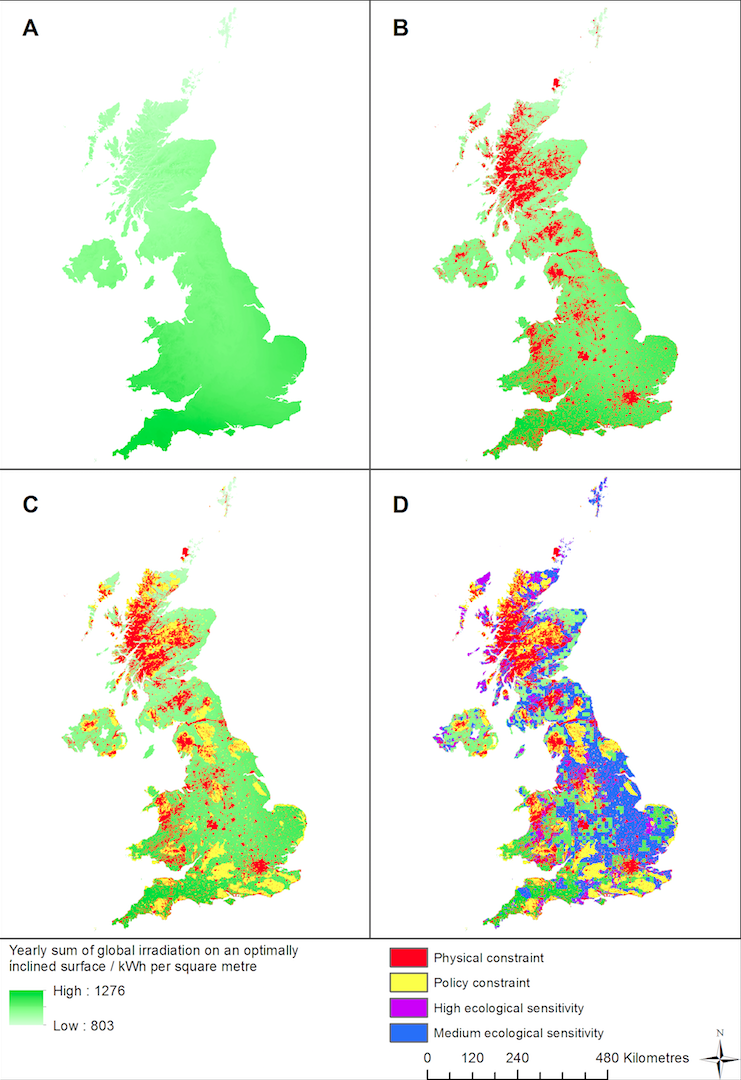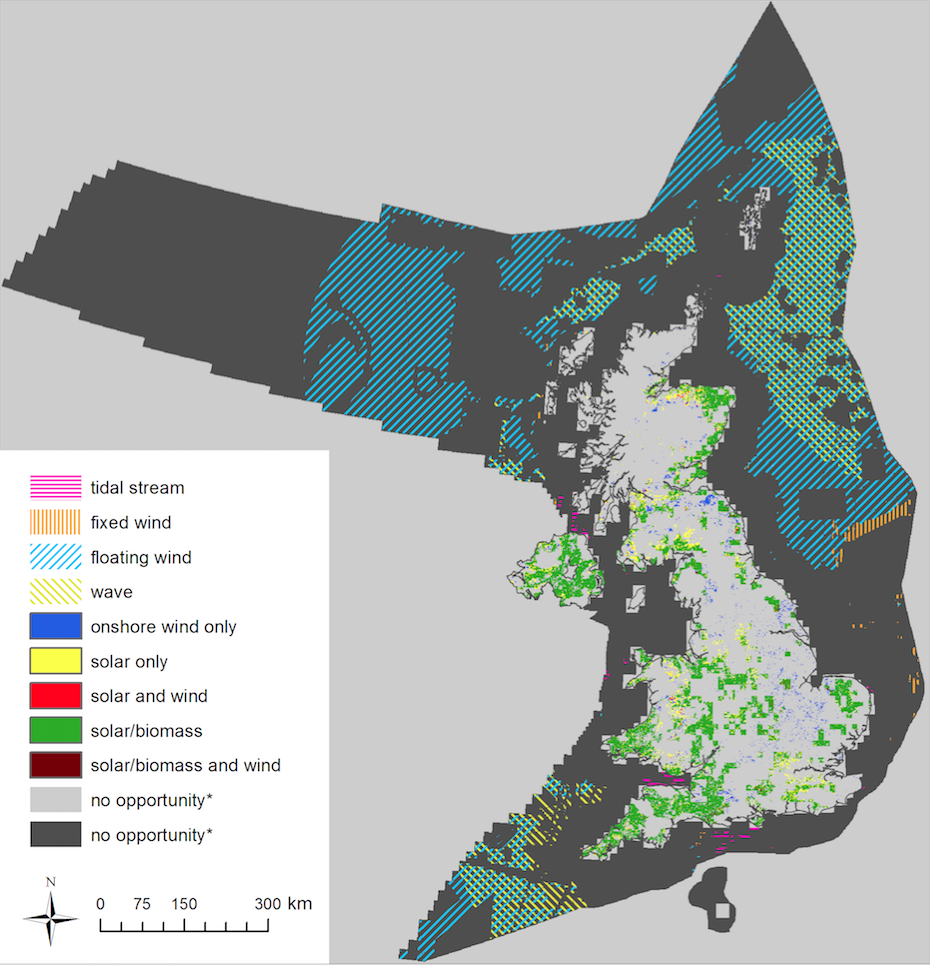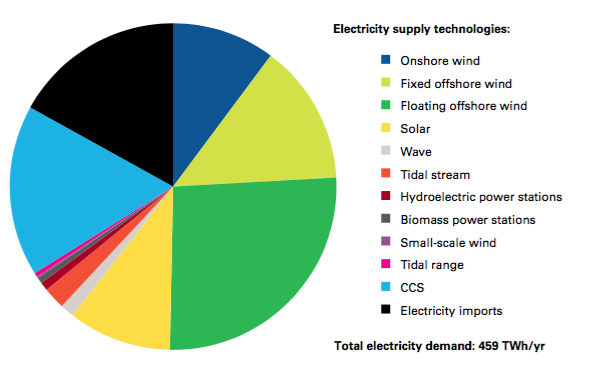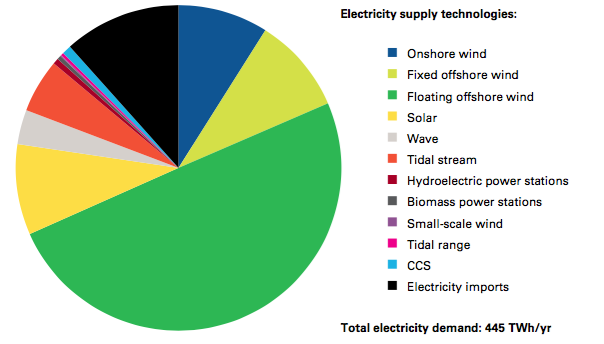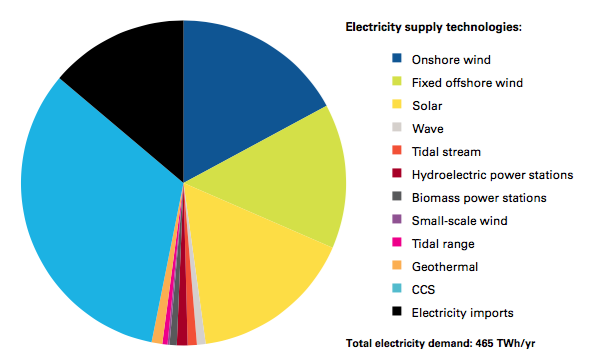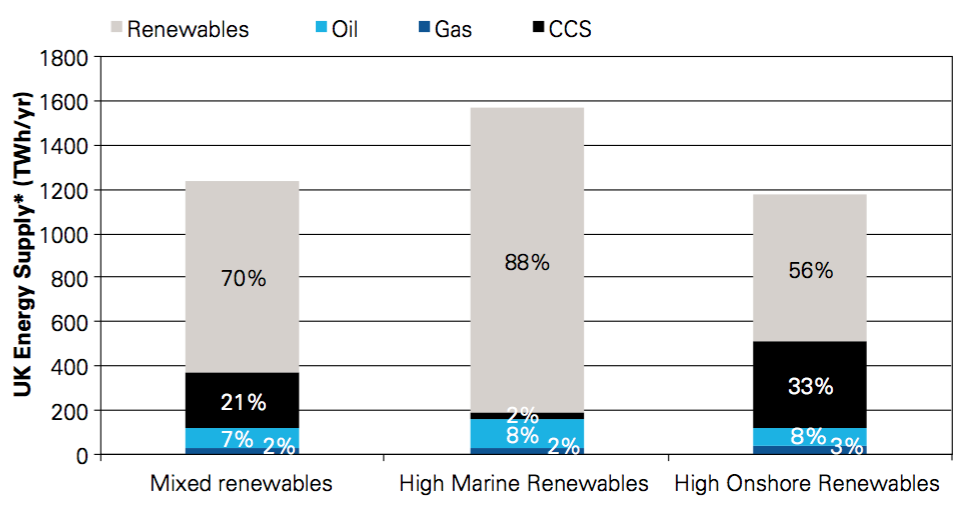The UK can hit its climate targets without harming its wildlife, according to a new report from the Royal Society for the Protection of Birds (RSPB).
Setting out its vision for UK energy to 2050, the RSPB has outlined what renewable energy installations should be built and where, according to a set of wildlife-centred criteria.
Philippa Roddis, climate change policy officer at RSPB, tells Carbon Brief:
The RSPB has historically had a conflicted relationship with wind turbines.
On one hand, it has gained a reputation for being anti-wind, due to a number of legal challenges it has launched at proposed wind farms. The group says that it scrutinises hundreds of applications every year, and opposes around 6% of them on the grounds that they could threaten bird populations.
On the other hand, it has asserted that climate change “poses the single greatest long-term threat to birds and other wildlife” and powers half of its own operations with a wind turbine at its headquarters.
Where should renewables go?
The UK has a legally binding target to reduce its greenhouse gas emissions by 80% by 2050, although there are no rules on the energy mix it should use to cut emissions to this level.
RSPB has offered its own solution to meeting this goal with unusual specificity. Not only has it envisaged the UK’s future energy mix, but it has also created maps illustrating where each energy source should be located.
This approach first eliminates areas where it is not technically viable to produce each type of energy (for example, where it is not windy enough). Then, it excludes areas with physical constraints, such as buildings and roads. Then, areas with policy constraints, such as Ministry of Defence sites. And, finally, it excludes areas with medium or high ecological sensitivity, based on the available data.
The following map shows how available land is gradually whittled down in the case of a solar farm.
The following map, which includes the UK’s exclusive economic zone, shows available land for each renewable technology once all non-available land has been excluded.
In theory, this amount of land could generate enough energy to cover the UK’s needs more than three times over, according to the RSPB report, as the graph below shows.
Potential energy that could be generated from renewable sources located in areas of low ecological risk, compared to the UK’s total energy consumption from all sources in 2014. This graph shows the upper end of the range. At the lower end, renewables could generate 5,558 terawatt hours per year (TWh/yr). Source: RSPB’s 2050 Energy Vision, DUKES. Chart by Carbon Brief.Scenarios
Based on these limitations, RSPB has drawn up three different scenarios for how the UK could get its electricity, while also hitting its 80% emissions reductions goal and protecting nature. Separately, they have also looked at how the UK’s energy system as a whole could transition to be low-carbon.
Nuclear power was excluded from the scenarios by the RSPB due to concerns about the storage of nuclear waste.
It created these scenarios using the DECC 2050 calculator, a tool designed by the government to test the cost, security and feasibility of different energy scenarios by 2050, as well as whether they hit the 80% emissions reduction goal.
The first of these scenarios includes a mixture of renewables, fossil fuels with carbon capture and storage (CCS) and electricity imports.
The second is based on using a high volume of marine renewables, including half of the UK’s electricity coming from floating offshore wind.
The third is based on high onshore renewables, particularly wind and solar, assuming that there is little progress in the development of marine renewable technologies. It is also heavily reliant on imports and CCS.
The DECC calculator estimates that each of these low ecological risk scenarios is achievable at a similar cost to other decarbonisation pathways — between 8.2% and 9.4% above business-as-usual, compared to an average of 9.3% for the other examples modelled by the tool.
Issues
As these scenarios illustrate, crafting an electricity system that is 100% based on clean, domestic renewables is easier in theory than in practice. Each of the scenarios rely to some extent on fossil fuels with carbon capture and storage, imported electricity or currently unavailable technologies.
These scenarios generate 465 terawatt hours per year (TWh/yr) of electricity at most — and they include imported electricity and CCS, which captures emissions from fossil fueled plants. This is a fraction of the 6,277TWh/yr maximum output that RSPB calculated could be generated based on available land.
The scenarios go beyond what is technically possible into what might actually be feasible, taking into account costs, the state of the technologies and ecological uncertainties.
Roddis tells Carbon Brief:
The limits of technology
The problem with asserting that floating offshore wind turbines could provide half the UK’s electricity per year is that the technology exists only at a very early stage, with work due to begin on the world’s first installation in Scotland later this year.
There are also very few working examples of CCS across the world, and the UK has rolled back on its commitment to advance the technology with the withdrawal of £1bn of promised funding.
For instance, the high marine renewables scenario includes no commercial scale CCS, but this is on the basis of floating turbines having developed enough by 2050 to provide 50% of the UK’s electricity. The scenario assumes that this will provide enough consistent energy to maintain security of supply without any additional capacity from power stations equipped with CCS.
The high onshore renewables scenario, however, assumes that there is less progress in the development of marine technologies. Solar and onshore wind provide 33% of the annual electricity supply in this case, leaving CCS to pick up much of the slack.
The report adds that there are other important elements in managing security of supply in the 2050 scenarios it presents:
Fossil fuels
RSPB’s vision for 2050 sees the UK using a lot less energy overall. Energy demand as a whole (not just electricity) dips from 1,661TWh/yr to around 1063-1092TWh/yr by 2050 — a reduction of more than a third.
But despite the large potential for renewables, the scenarios still see the UK using varying amounts of fossil fuels — even though their extraction poses additional threats to wildlife on top of climate change, including habitat loss, disturbances, and overuse of water supplies, according to the report.
However, RSPB says this is necessary because it is not possible to totally electrify the heating and transport sectors. This means that some fossil fuels will still be required outside of what can be mitigated through CCS — although coal will be phased out entirely (the UK already aims to phase out coal for the power sector by 2025).
The graph below shows the RSPB’s vision for UK energy mix by 2050.
The decarbonisation challenge
It is notable that all of the RSPB’s scenarios rely to some extent on technology that is not currently commercially available.
This is not necessarily a problem, Roddis tells Carbon Brief:
Nor does it mean the UK should wait until these technologies are commercially available before it embarks on the path of decarbonisation, she says:
While the technologies may still be emerging, the overall message from the RSPB is clear. When renewables are thoughtfully located, nature and decarbonisation can go hand-in-hand.
Main image credit: Nick Page/Flickr.
-
UK can decarbonise without harming nature, says RSPB
-
The RSPB has drawn up three different scenarios for how the UK could get its electricity, hit its 80% emissions reductions goal and protect nature


